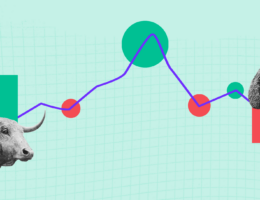Tracking error is an important metric that Investors use to assess how well an investment performs against the benchmark’s return.
The Return on Equity (ROE) is a metric that indicates the financial performance of a company. Read on to learn more about ROE and the difference between ROE, ROI, and ROCE.
Accounts receivable is an asset for the business, which signifies the money owed from debtors. Let’s understand what it is all about.
Liquidation is the process of winding up of a business and sell business assets to pay off liabilities. Know more about liquidation, its types, etc. in this blog.
The difference between the interest earned over assets and the interest paid out on deposits is termed net interest income. It is a measure of financial performance.
Beta is a measure of the volatility of a stock in relation to the market. Read further to understand types of beta, how to calculate beta, and more.
The volume-weighted average price (VWAP) is a metric that shows the average price of the security post-volume adjustments. Read on to learn more about the measure.
Monopoly is a type of market that is characterised by a single seller that sells a unique product. Read more about market structure and monopoly market.
The interest coverage ratio is an important metric that depicts how a company manages its debts. Learn more about its types, importance, formula, and more.










